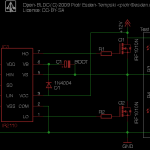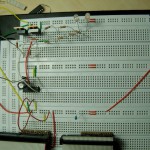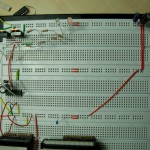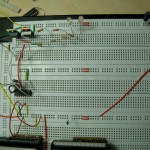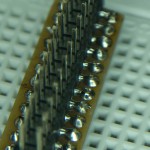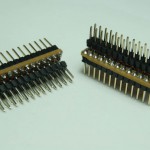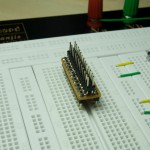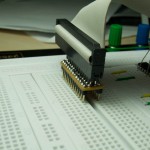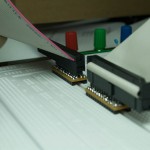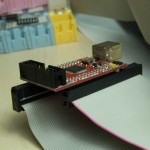The other day I ordered parts to build the first prototype of Open-BLDC on a breadboard. It is a bit different animal then the board designs I already have because it needs legged parts.
The main problem is to find the right MOSFETs and driver chips for this application. As I have no electrical engineering background I did not really understand the values that were listed in the data sheets. I asked an electrical engineering friend and he helped me with locating the most important values. Thanks Federico!
MOSFET Values
I realized that the most important values for MOSFETs are:
- Drain to source voltage
- Gate to source voltage
- Continuous drain current
- Input/Output capacitance (turn on/off time)
The MOSFET I selected is not perfect but should do for this first prototype. It is the IRF1010N from International Rectifier.
Drain to source voltage
In my case as I am using the standard three cell LiPo batteries used in models. I need something above 12V. The smallest ones are 20V but the one I could get from Reichelt was 55V. That is still OK.
Gate to source voltage
For example the high side MOSFET has 12V attached to source. When the gate is driven low, the voltage difference between gate and source are 12V. In many cases that is a problem. Because when you charge your battery full the voltage difference gets even bigger or even worse when you try to use a battery with 4 cells instead of 3. Most MOSFET that I found have only 12V specified as gate to source voltage. It still probably works with more because of tolerances but still it is probably not good. The MOSFET I am now using for the prototype has ±20V in the specification. That should work.
Continuous drain current
This one will get more important in the future. It is telling how much current the MOSFET can put through. For the prototype that is more or less a functional test of the circuit it does not matter so much. But in the future when I want the controller to support up to 20A continuous current this one will get very important. The IRF1010N is specified for 85A at 25ºC and 60A at 100ºC. So this values are meant for applications where you have a heat sink attached to the MOSFET’s. I will try to avoid using heat sink. I could calculate the exact number but the rule of thumb is that one should take 1/10th of the value. This means that with this MOSFET I will be able to run at about 6A to 8A. As the lab power supply, I have access to and will use for the prototype, can only deliver 2A that should be more then enough. There are several other values that are connected to this one. Like drain to source on resistence, thermal resistence, power dissipation aso. One can use them to calculate the exact amount of current the part can put through. But I think it is too early to make all the calculations yet.
Input/Output capacitance (turn on/off time)
This is a set of values that tell how fast the MOSFET can be switched on and off. It will also get more important in the future when selecting the right MOSFET for the final design. For now the 76ns rise and 40ns fall times should be enough. They will probably get even lower because I am using a dedicated half bridge driver chip.
Half Bridge Driver
I did a lot less research here. Thankfully there are not as many half bridge drivers out there as there are MOSFETs. The one I selected is the IR2110. It would be a bit big for the final design because of the additional leads. But it should be OK for this prototype. The problem I had here is that I have 3.3V digital input from the microcontroller and I want to drive the MOSFETs with 12V. As it seems the other drivers that I considered don’t recommend that. That is why I had to choose this one. I hope that I will find something that is smaller and still supports the 3.3V input.
Conclusion
Selecting parts is a very tiresome endeavor. The shops only have a subset of the parts that are available out there. I wanted to order all parts from one shop that is somewhere in Germany. I could probably get better parts ordering from Digikey but it would cost more. For the next stage of Open-BLDC development I will have to select better parts. But first I how a feasible circuit should look like. That is why I am going for the breadboard test first.
If you find any mistakes or I misunderstood something here feel free to tell me.
Cheers Esden
